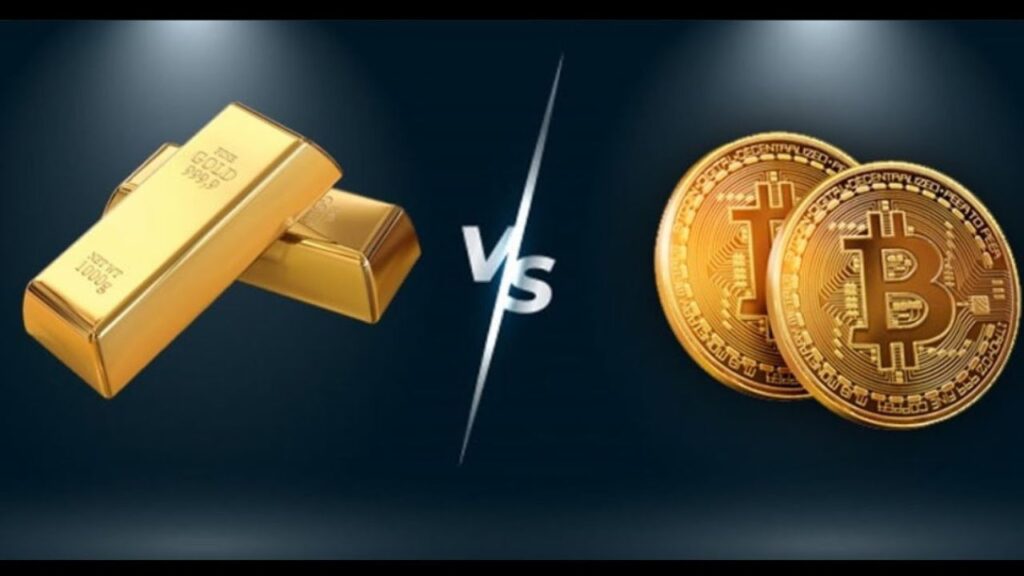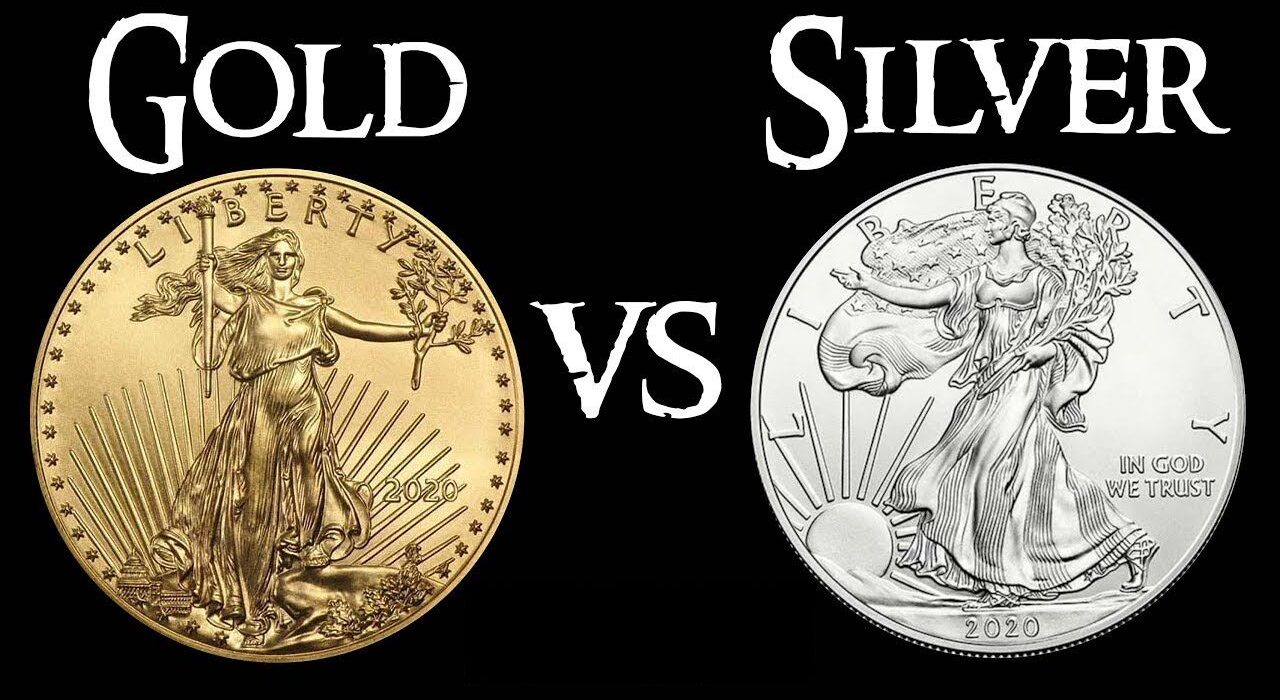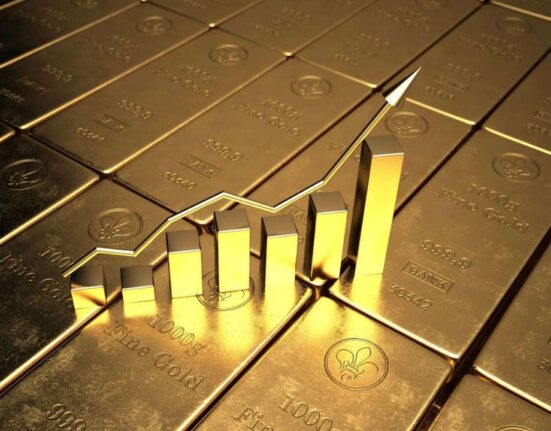Gold tends to be a safer, more stable investment, often sought during economic uncertainty. Silver is more volatile, with potential for higher returns but greater risk. Both can diversify portfolios, but Gold is favored for wealth preservation, while Silver may offer growth opportunities.
The Key Gold vs. Silver Investment
The choice between Gold and Silver often poses a significant dilemma for investors seeking to diversify their portfolios. Both precious metals have unique characteristics that appeal to different types of investors. This comprehensive guide delves into the nuances of gold and silver investments to help you make informed decisions.
Historical Perspective
Gold
Gold has long been revered as a symbol of wealth and stability. Its intrinsic value and scarcity have made it a sought-after asset for investors during times of economic uncertainty. From ancient civilizations to modern economies, Gold has maintained its allure as a store of value.
Silver
Although less widely recognized than Gold, Silver also boasts a rich history as a precious metal. With its industrial applications and relative affordability compared to Gold, Silver has played a crucial role in various industries, from electronics to jewelry.
Investment Attributes
Gold
Hedge Against Inflation
Due to its intrinsic value and limited supply, Gold is often viewed as a hedge against inflation. During periods of economic turmoil or currency devaluation, Gold tends to retain its purchasing power, making it an attractive option for preserving wealth.
Safe Haven Asset
Investors flock to Gold as a safe haven asset in geopolitical instability or market volatility. Its status as a globally accepted form of currency provides reassurance to investors seeking stability amidst uncertainty.
Silver
Industrial Demand
Gold and Silver have extensive industrial applications, ranging from electronics to solar panels. The demand for Silver in various industries contributes to its intrinsic value, making it a versatile asset with potential for capital appreciation.
Affordability
Silver’s lower price point than Gold makes it more accessible to a broader range of investors. As such, Silver often appeals to those seeking to diversify their portfolios without committing significant capital.
Market Dynamics
Gold
Price Volatility
While Gold is renowned for its stability, it is not immune to price volatility. Factors such as geopolitical tensions, interest rates, and currency fluctuations can influence the price of Gold, leading to short-term fluctuations in its value.
Investment Vehicles
Investors can gain exposure to Gold through various investment vehicles, including physical bullion, exchange-traded funds (ETFs), and mining stocks. Each option offers unique advantages and considerations based on the investor’s risk tolerance and investment objectives.
Silver
Correlation with Gold
Silver often exhibits a strong correlation with gold prices, albeit with greater volatility. As such, the price of Gold can impact the price of Silver, albeit to a varying extent.
Industrial Demand Dynamics
The demand for Silver in industrial applications plays a significant role in its price dynamics. Trends in the electronics, healthcare, and renewable energy sectors can influence the long-term outlook for silver prices.
Gold vs. Silver Investment: A Comprehensive Guide
Gold: The Timeless Asset
Gold has maintained its allure throughout history. It’s often seen as a safe haven during economic uncertainties. Investors flock to Gold for its stability and intrinsic value. Its limited supply and enduring demand contribute to its status as a symbol of wealth.
Gold stands as an enduring asset, cherished across generations for its stability, intrinsic value, and timeless allure. Its limited supply and consistent demand solidify its position as a cornerstone of wealth preservation and investment strategies.
Silver: The Versatile Alternative
On the other hand, Silver offers a unique proposition. While it shares some characteristics with Gold, such as being a precious metal, Silver also has industrial applications. Its conductivity and reflectivity make it indispensable in various sectors, including electronics and photography.
Due to its multifaceted nature, Silver emerges as an intriguing option. Beyond its status as a precious metal, Silver’s utility in various industries, including electronics and photography, enhances its appeal as a dynamic investment choice.
Comparing Performance: Yield and Volatility
When assessing investment options, performance is paramount. Gold tends to outperform Silver during times of economic turmoil. Its status as a store of value often leads to higher returns. However, Silver can exhibit greater volatility, presenting opportunities for savvy investors to capitalize on price fluctuations. Yield and volatility are evaluated to understand how an investment performs over time, considering both returns and the level of risk involved.
Diversification Benefits: Balancing Portfolios
Diversification is a cornerstone of prudent investing. Incorporating Gold and Silver into a portfolio can mitigate risk and enhance overall returns. While Gold offers stability, Silver introduces growth potential. This combination provides a balanced approach to wealth preservation and accumulation. Achieving Portfolio Balance by Incorporating Varied Assets for Risk Mitigation and Enhanced Returns.
Factors to Consider: Making an Informed Decision
Several factors influence the choice between Gold and silver investment:
- Market Conditions: Assess current economic trends and geopolitical factors.
- Risk Tolerance: Determine your comfort level with volatility and uncertainty.
- Investment Goals: Align your investment strategy with your long-term objectives.
- Time Horizon: Consider your investment horizon and liquidity needs.
The Verdict
In the debate of Gold versus silver investment, there’s no one-size-fits-all solution. Each metal offers distinct advantages and considerations. Ultimately, the decision rests on your individual circumstances and objectives. Whether you opt for the timeless allure of Gold or the versatile appeal of Silver, strategic allocation is key to a well-rounded investment portfolio.
Some Points of Gold Versus Silver Investment

Why Silver is a Better Investment Than Gold: Silver boasts unique industrial and technological applications, enhancing its demand beyond just being a store of value. Its affordability compared to Gold makes it accessible to a wider range of investors. Additionally, Silver often exhibits higher price volatility, offering the potential for greater returns for those willing to accept increased risk.
How Much Gold vs Silver to Own: The optimal allocation of Gold versus Silver in an investment portfolio depends on individual financial goals, risk tolerance, and market conditions. Traditional recommendations suggest a 70% gold to 30% silver ratio, but this can vary based on factors such as economic outlook, geopolitical stability, and personal preferences.
Gold vs Silver Price Chart: A gold versus silver price chart visually compares the historical performance of gold and silver prices over a specified period. It helps investors analyze trends, identify potential buying or selling opportunities, and make informed decisions based on past price movements.
How to Invest in Gold and Silver ETF: Investing in Gold and Silver Exchange-Traded Funds (ETFs) provides exposure to the precious metals market without the need for physical ownership. Investors can buy and sell shares of these ETFs on stock exchanges, offering liquidity and diversification benefits. To invest, one can open a brokerage account and purchase shares of a Gold or Silver ETF just like any other stock.
Why Gold is a Bad Investment: Despite its historical status as a haven asset, Gold may be considered a bad investment under certain circumstances. It generates no income or dividends and can be subject to significant price volatility. Its long-term performance may only sometimes keep up with other investment opportunities, such as stocks or real estate.
Precious Metals are a Bad Investment: While precious metals like Gold and Silver can hedge against inflation and economic uncertainty, they also have investment drawbacks. Various factors, including industrial demand, currency fluctuations, and investor sentiment, can influence prices. Moreover, they lack the income-generating capabilities of other assets, potentially limiting long-term returns.
Gold vs Silver Ratio: The Gold versus silver ratio is a measure that compares the price of Gold to the price of Silver. It indicates how many ounces of Silver it takes to purchase one ounce of Gold. Investors often use this ratio to assess the relative value of Gold and Silver and decide which metal to invest in based on historical trends and market conditions.
Is Gold and Silver a Good Investment? Whether Gold and Silver are good investments depends on various factors, including individual financial goals, risk tolerance, and market conditions. While they can provide diversification and serve as a hedge against economic uncertainty, they also have limitations, such as a lack of income generation and price volatility. Conducting thorough research and consulting with financial advisors can help determine if Gold and Silver align with an investor’s objectives.
Conclusion
Both Gold and Silver offer unique investment opportunities with distinct advantages and considerations. While Gold is prized for its historical significance and stability, Silver presents opportunities for diversification and industrial demand. Ultimately, the choice between gold and silver investment hinges on factors such as risk tolerance, investment objectives, and market dynamics. By understanding the key differences between these precious metals, investors can make informed decisions to bolster their portfolios.
FAQ
Is it Better to Invest in Gold or Silver?
The choice between investing in Gold or Silver depends on various factors such as market conditions, economic stability, and personal investment goals. Gold is typically considered a more stable store of value, while Silver may offer higher volatility and potential return.
What is the Best Metal to Invest in Right Now?
The best metal to invest in right now depends on market trends and individual goals. Precious metals like Gold and Silver are often considered safe havens during economic uncertainty, while industrial metals such as copper may thrive during economic growth and infrastructure development periods.
Will Silver Ever Be Worth More Than Gold?
While it’s possible for Silver to temporarily surpass Gold in value due to market fluctuations or demand shifts, historically, Gold has maintained a higher value due to its scarcity, durability, and perception as a store of wealth.
Does Dave Ramsey Recommend Investing in Gold and Silver?
Dave Ramsey generally advises against investing in Gold and Silver. He advocates for diversified investments in growth stock mutual funds, real estate, and bonds, emphasizing long-term wealth-building strategies over commodities like precious metals, which can be volatile and speculative.
Does Warren Buffett Buy Gold or Silver?
Warren Buffett has traditionally been skeptical of investing in Gold or Silver, preferring assets with productive capabilities. He stated that Gold doesn’t generate earnings or dividends, making it less appealing than other investments like stocks or businesses.
What Does Warren Buffett Think About Gold and Silver?
Warren Buffett views Gold and Silver as non-productive assets that lack utility. He prefers investments with inherent value and productive capabilities, such as businesses. Buffett believes in generating wealth through long-term investments in productive assets rather than relying on precious metals.




